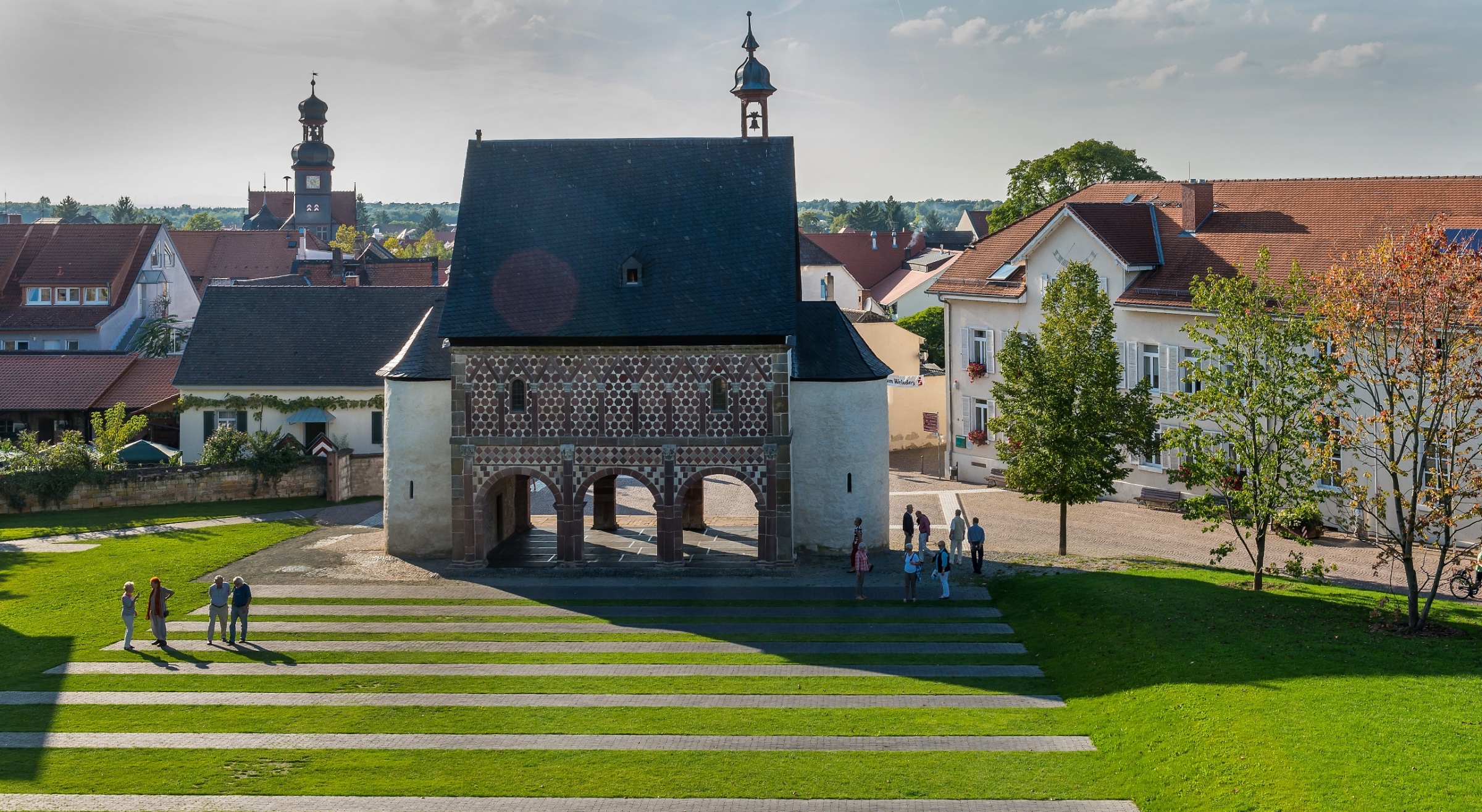UNESCO WORLD HERITAGE LORSCH ABBEY
In 1991, Lorsch Abbey was the first monument in Hesse to be included in the UNESCO World Heritage List. The international community thus recognized the significance of the former imperial abbey of Charlemagne in terms of architectural history, the history of rule and the history of education. Today, the best-preserved Carolingian building north of the Alps can be found here, it is known that modern medicine in the western West began here and the Lorsch Codex is regarded as the land register of Germany.
Ascent to the imperial monastery
Founded around 764 by the family of the Franconian count Cancor, the economic rise of the abbey began with the transfer of the Nazarius relic from Rome to Lorsch Monastery in 765. In just a few decades, the ownership of estates from donations to St. Nazarius stretched from the North Sea coast to Graubünden. In 772, the monastery was transferred to Charlemagne, who placed it under his protection and granted it immunity. Lorsch was now a royal and later imperial monastery and protected from the covetousness and encroachments of the surrounding bishops and nobles. This privilege was to last until 1232, when the monastery fell to Mainz, the Benedictines were expelled and replaced first by Cistercians and shortly afterwards by Premonstratensians.

Changeable history
From its foundation in Carolingian times until well into the High Middle Ages, Lorsch Abbey was one of the most important cultural centers for disseminating the educational programs developed at the royal court. The abbey became famous for its scriptorium and its extensive library, one of the largest and most important of the Middle Ages. Today, the surviving works are scattered across 73 libraries worldwide. The monastery was also an important pioneer in medical terms: The Lorsch Pharmacopoeia from the end of the 8th century is the oldest surviving medical-pharmaceutical manuscript from the post-antique period. Lorsch Abbey is even mentioned in one of the most famous legends, the Song of the Nibelungs, as the burial place of Siegfried. As said: a legend. However, it was certainly the resting place of the last East Frankish kings from the Carolingian dynasty.
Cultural and historical significance
Until the first half of the 13th century, the imperial monastery successfully defended its independence again and again. In 1066, the monastery was forced to make a political demonstration of power and built a castle, the Starkenburg, in neighboring Heppenheim. It was the first time in its history that the monastery defied the ruling king and forced him to restore the old rights to Lorsch. In 1461, Mainz pledged Lorsch Abbey to the Electoral Palatinate. Just under a century later, it became an extinct monastery during the Reformation and was ultimately dissolved. A short time later, Spanish troops destroyed the monastery complex during the Thirty Years’ War.
